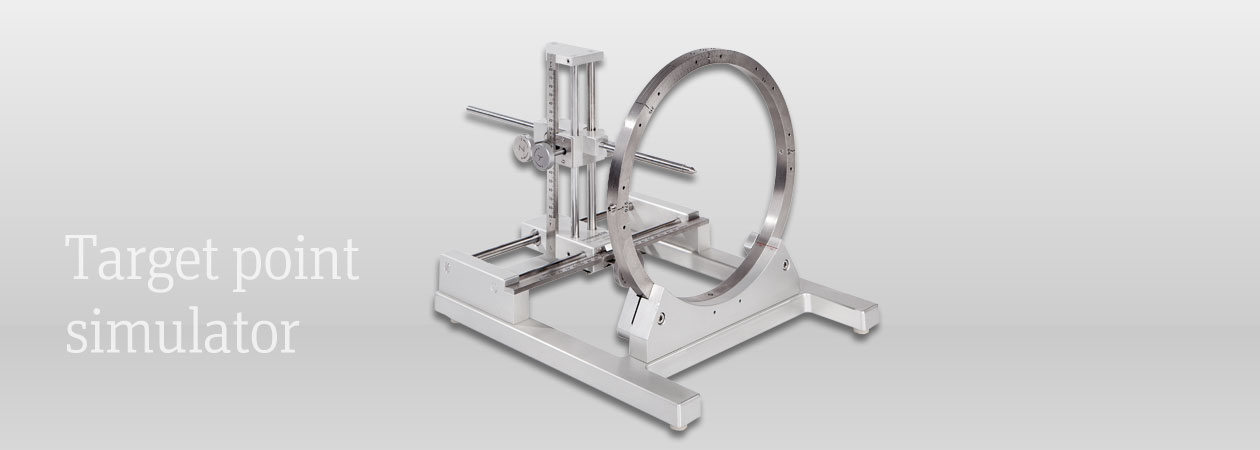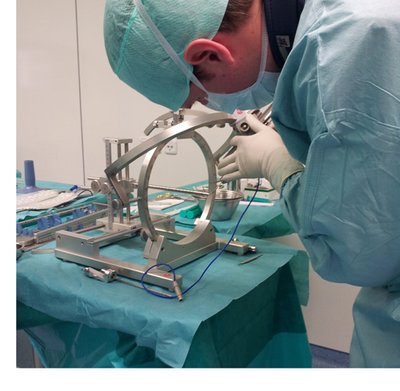
The stereotactic target point simulator from inomed, also referred to as a phantom, is a unique product and only available from inomed. Professors Riechert and Mundinger, globally recognized pioneers in neurosurgery, have developed the phantom alongside the development of the RM >> stereotactic system. The target point simulator has become internationally established and is regarded by leading neurosurgeons to be an essential and recommended tool for planning and conducting complex operations on the brain. The use of the phantom becomes especially significant for the highly complex neuromodulation (DBS) techniques.
The target point simulator (phantom) is used primarily to translate the coordinates from the planning software and mechanically setting the target point in real-space prior to surgery. A steel target point rod is moved with three movable thumb screws in the X-, Y-, and Z-axis (coordinates from the planning software). The tip of the rod forms the target point, in accordance with the planning software. A base ring is attached to the target point simulator and the aiming arm unit can be placed on this ring. The phantom consequently simulates the respective target point for the patient.
There are two options for setting the target direction on a phantom:
The desired stereotactic coordinates are set on the phantom. The trepanation marker is brought and fixed to the patient's head in the position of the desired trepanation gap. This is transferred to the base ring on the target point simulator by loosening the retaining screw and attaching in the same place (number of degrees on the ring).
After attaching the aiming arm to the base ring on the phantom, a puncture probe is directed through the opening of the trepanation marker directly to the target point. In order to do this, all screws on the aiming arm and carriage are loosened. This enables the assembly to be moved in all directions. By looking through the depth gauge, with the instrument holder and the trepanation marker, it is relatively easy to slide the assembly in all directions and move until the tip of the aiming point marking rod is visible. Once the best possible setting is reached on a phantom, all fixing screws are locked and secured and the entire aiming arm is attached to the base ring.
Using X-ray, CT and MRI scans with the inomed planning software (iPS), the target and trepanation point coordinates are calculated and converted to stereotactic angles. The coordinates calculated by the iPS can be set directly on the aiming arm carriage of the RM or ZD stereotactic system. The aiming arm is then mounted on the phantom for verification.
Despite this rather simple target setting, an additional check on the phantom is always recommended. Any errors in adjusting the angle on the aiming arm or curved/bent instruments are detected immediately with the phantom. The phantom is therefore the final authority for preventing stereotactic errors. Only the use of a phantom can ensure the highest level of safety for patients during neurosurgery and neuromodulation >>.
